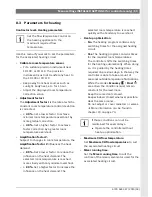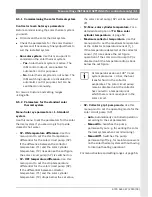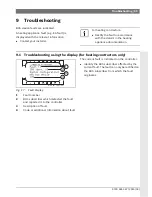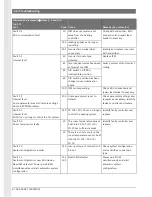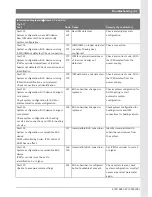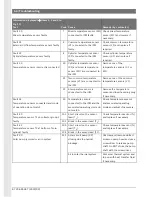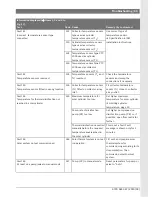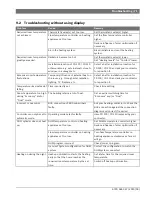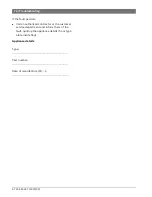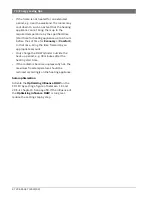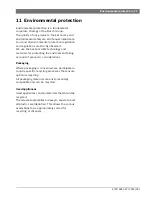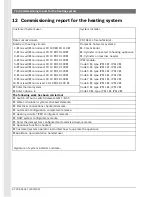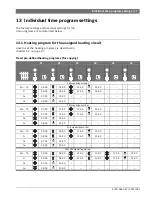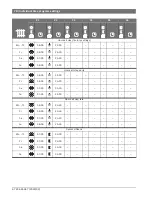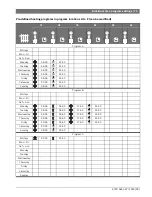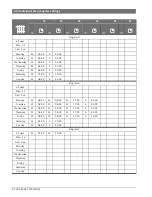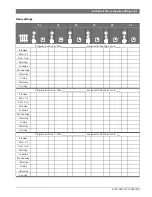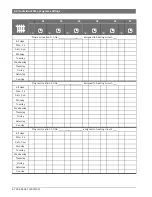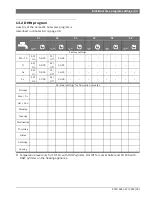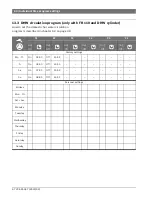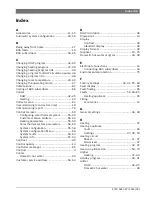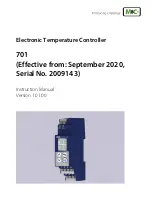
6 720 645 347 (2010/09)
Energy saving tips
|
73
10 Energy saving tips
•
The temperature in the lead room (where the
controller is fitted) acts as a guide for the
heating circuit to which the controller is
assigned. Therefore, set the output of the
radiators inside the lead room as low as
possible:
–
For
manual valves
via preselection.
–
With fully opened
thermostatic valves
via
the return fitting.
If the thermostatic valves in the lead room
are not fully open, they may reduce the
heat supply even though the controller
requests heat.
•
Regulate the temperature in adjacent rooms
via thermostatic valves.
•
External heat in the lead room (e.g. solar
radiation, stove etc.) can result in too little
heating in adjacent rooms (the heating system
remains cold).
•
Make effective use of the temperature levels
and switching times by setting them to suit
the preferences of the occupants.
–
Comfort
= For a comfortable living
environment
–
Economy
= For an active living
environment
–
Frost
= For when away or asleep
•
Much energy can be saved by reducing the
room temperature via economy phases.
Reducing the room temperature by 1 K ( °C)
enables up to 5% energy to be saved.
It is not recommended to let the room
temperature of heated rooms fall below
+15 °C during the daytime, otherwise the
cooled-down walls continue to radiate cold
and the room temperature rises higher,
leading to higher energy consumption than if
an even heat supply is applied.
•
Good thermal insulation of the building: the
set temperature for
Economy
is never
reached. Nevertheless energy is being saved
as the heating system stays off.In that case set
the switching point for
Economy
to an earlier
time.
•
Don't keep windows slightly open for
ventilation. This leads to a constant extraction
of heat from the room without noticeably
improving the ambient air in the room.
•
Vent briefly but intensively (open window
fully).
•
When ventilating, turn off the thermostatic
valve or set the operating mode selector to
Frost
.
•
Make effective use of the temperature levels
and switching times for the domestic hot
water by setting them to suit the preferences
of the occupants.
If heat-up optimisation is switched on:
•
To make best use of heat-up optimisation, set
the times for heating up to the temperature
levels for
Economy
or
Comfort
as late as
possible.
•
The heat-up optimisation function learns the
conditions in the lead room
Æ
chapter 8.3 on
page 59.
The first time heat-up optimisation is used,
there may be significant temperature
differences. During the initial learning phase,
do not change the setting before heat-up is
complete. After a few days, the learning
process will have advanced and the control
accuracy will improve.
•
Set the temperature for
Economy
or
Frost
as
low as possible.
•
During
Economy
or
Frost
the lead room
conditions must remain constantly the same
Æ
chapter 8.3 on page 59.
If the conditions change, it can take several
days for heat-up optimisation to adapt to the
new conditions.

